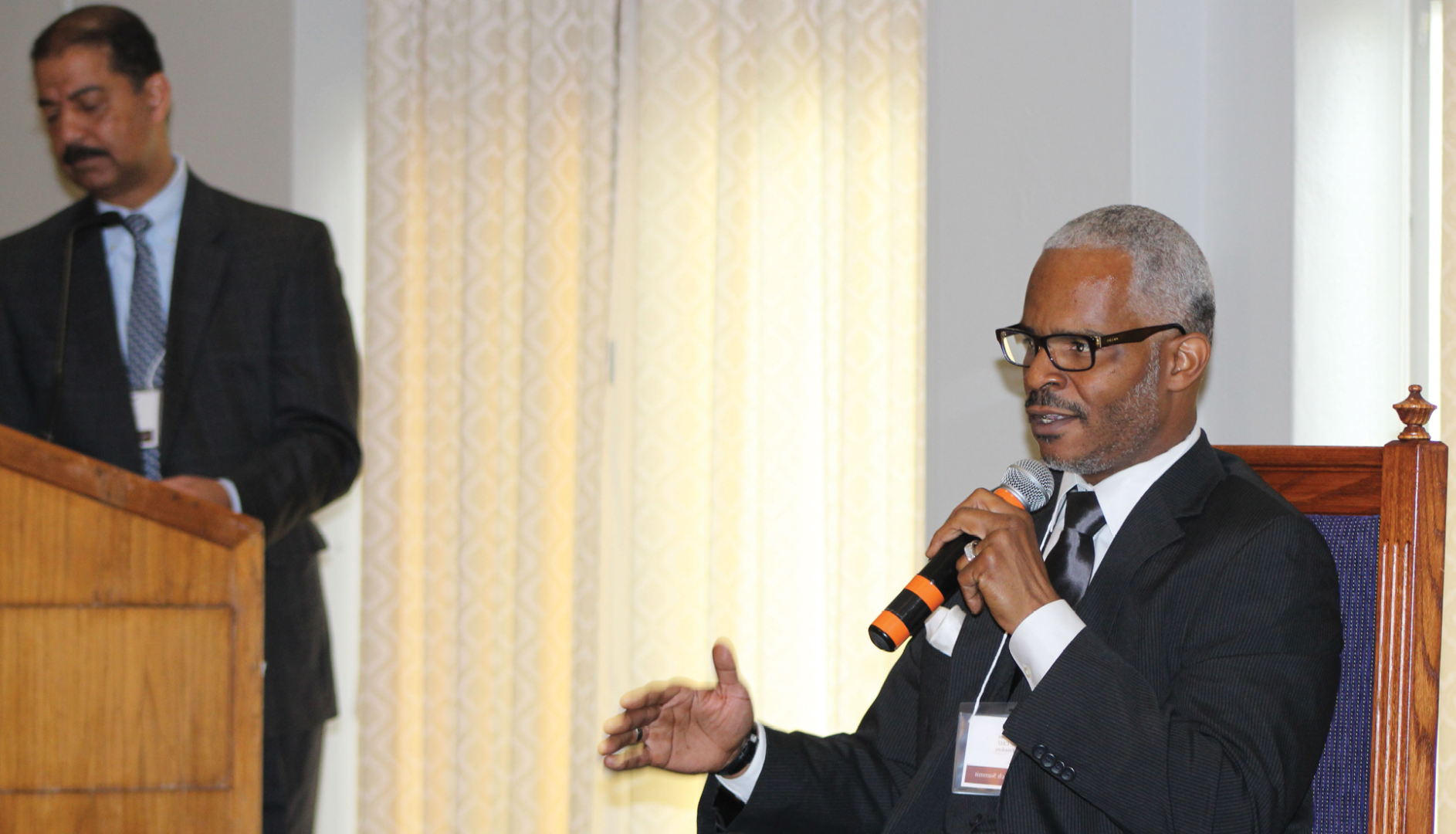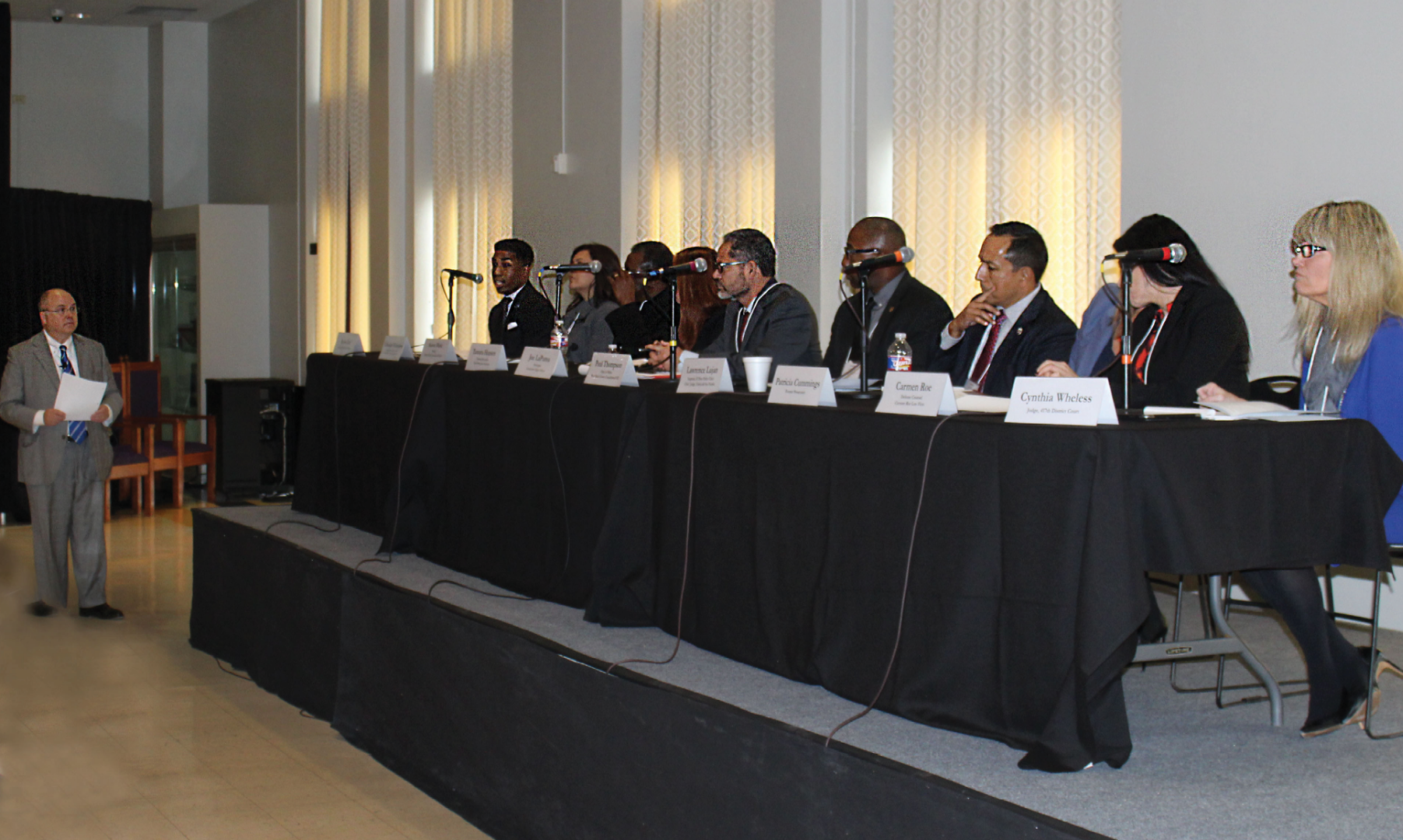Beyond the Bench: Law, Justice, and Communities Summit
- Download the Lessons Learned
-
Time

The Texas Beyond the Bench Summit was planned in a three-month timeframe. Although the major objectives were all met within that time period, six months would have been ideal to address contingencies and further coordinate efforts. Time permitted, the breakout sessions could have been organized by region or profession, but due to planning time constraints, an open-seating format was chosen for the breakout session. Also, if the "Save the Date" invitation could have been sent earlier in time, local leaders would have had more time to assemble a team to attend the event.
-
Audience
The event speakers and participants were invited from every region of Texas. It was important to include professional, geographic, racial, ethnic, gender, and cultural diversity for this event. Although several hundred participants were invited, the vast majority who attended lived in the area near the event. Funds for travel reimbursement were not available. This added to the challenge of holding a statewide conference in only one location. It was also important to cast a wide net with invitations to participants. Approximately 600 people were invited and about 200 attended the event.
-
Content
The program agenda was developed to appeal to a broad audience and provided a wide array of experiences throughout the event. For example, the keynote address was designed to be inspiring, and the testimonials personalized the problems of bias and its effects. The data presentation got participants on the same page about the science and research behind unconscious bias. The Deconstructing Decision-Making panel used a fictional fact-pattern with several indicators of bias and broke it down into decisionmaking points on a micro-level. The breakout sessions presented an opportunity for dialogue and elicited commitments from participants to take home and implement. The closing speaker tied together the themes of the day and energized a call to action. Although overall the participants were very satisfied with the content for the Summit, there was feedback that additional time would have been valuable during the breakout session. Each table had 8 to 10 participants so additional discussion time would have been useful.
One thing especially critical to the success of the event was that speakers were vetted extensively. Each speaker was screened before being contacted. After the initial phone call, staff contacted each speaker or panelist multiple times to confirm participation, answer questions, and develop the tone and content for the event. This extra effort fostered a personal relationship with the speakers, and this helped the day run more smoothly and cohesively.
It was critical to the two high courts convening the Summit that every aspect be fully inclusive, candid, respectful of different views, and constructive.
-
Organization

Approximately 4-12 staff met weekly during the three months of planning before the Summit. In the two weeks leading up to the Summit, staff met daily to ensure all details of the event were covered. In addition, the Planning Committee met three times via teleconference or webinar. One to two Justices of the Supreme Court of Texas were present at meetings with staff and at each planning committee call. The task list was a centralized way for everyone to stay aware of the various outstanding tasks and responsibilities. Over time, different staff became focused on discrete pieces of the planning (e.g. security, contacting speakers, managing RSVPs, etc.) It was helpful to identify major planning needs early and to delegate responsibility to certain members of the team. This was useful in streamlining the process and creating natural points of contact to troubleshoot on the day of the event. It was also important to identify one person with final decision-making authority who would be available as questions arose during the planning process.
-
Security
Due to the involvement of the high courts, numerous judges, and several other high profile attendees, security was a top concern. In addition to the normal protocols used in protecting members of the judiciary, local law enforcement made a site visit to assess security needs in anticipation of the Summit. Local law enforcement then developed a comprehensive plan to protect all the event participants that included entry into the venue, securing all exits, assessing chatter on social media related to the event, and developing contingency plans in the event of an emergency. It was key for staff to be aware of the security needs and plans and to ensure all law enforcement efforts were coordinated. This allowed everyone to enter and experience the event safely.
-
Evaluation
A brief survey was sent shortly after the Beyond the Bench Summit. Consider releasing a pre-event survey to assess gains in knowledge. In addition, it would have been helpful to set benchmarks and goals for the post-event survey.
-
Funding
There were several expenses associated with holding the Summit, including but not limited to: securing a venue, speaker travel, meeting materials, lunch, and audio/visual support. To ensure all needs for the event were met, costs and potential funding sources were identified early.
-
Press Coverage
If one goal for an event similar to the Beyond the Bench Summit is to promote awareness about the issues presented, media presence should be a part of the planning process. Time permitted, a press conference can help fulfill this goal. Due to security concerns, the Beyond the Bench Summit was only open to those who received an invitation and there were no advertisements or postings on social media. If desired, having a more open invitation process might yield greater media presence and awareness about the event; however, the trade-off for this might be additional security risks or expenses.